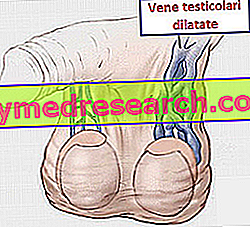Gemcitabine is a cytotoxic drug (cell toxic). It can be used alone or in combination with other antineoplastic drugs to treat various types of cancer.

Gemcitabine - Chemical Structure
Indications
For what it uses
Gemcitabine can be used to treat:
- Pancreatic cancer;
- Breast cancer, alone or in combination with paclitaxel;
- Ovarian cancer, either alone or in combination with carboplatin;
- Non-small cell lung cancer, either alone or in combination with cisplatin;
- Bladder cancer, either alone or in combination with cisplatin.
Warnings
Gemcitabine should be administered under the strict supervision of a doctor who specializes in the administration of anticancer chemotherapy drugs.
Due to the toxicity of gemcitabine in the kidneys and liver, the liver and kidney function of patients being treated with the drug must be constantly monitored.
Gemcitabine can suppress bone marrow activity, causing reduced synthesis of blood cells; therefore, the patients' blood composition must be monitored for the duration of the therapy.
Treatment with gemcitabine may promote the development of cardiac pathologies, therefore it is necessary to pay attention to the administration of the drug in patients who have a history of cardiovascular events.
Since gemcitabine may induce sleepiness, it is necessary to be sure that the drug has not caused this symptom - even in mild form - before driving vehicles or working on machinery.
Gemcitabine should not be used in patients under the age of 18.
Interactions
Treatment with radiotherapy concomitantly with gemcitabine has been shown to increase toxicity.
It is necessary to inform your doctor if you are taking - or have recently been taken - drugs of any kind, including over-the-counter, herbal and / or homeopathic products.
Gemcitabine and vaccines
Administration of live attenuated virus vaccines in patients receiving gemcitabine is strongly discouraged. Gemcitabine, in fact, is able to suppress the immune system thus causing an inadequate response of the patient to the vaccine.
Immunosuppression can promote the replication of the attenuated virus, favoring the appearance of infections and increasing the side effects of the vaccine itself.
Side effects
Gemcitabine can induce many side effects. These effects depend on the amount of drug administered, on the possible administration in association with other antineoplastic agents and on the general condition of the patient. Furthermore, each individual responds to chemotherapy in a different way, therefore, it is not said that the side effects will all appear with the same intensity in each patient.
The main adverse effects that gemcitabine treatment can cause are listed below.
Myelosuppression
Gemcitabine can cause myelosuppression, ie it can promote bone marrow suppression. This suppression results in reduced blood cell synthesis (reduced hematopoiesis).
The decrease in blood cell production can lead to:
- Anemia (decrease in hemoglobin blood levels), the main symptom of the onset of anemia is the feeling of physical exhaustion ;
- Leukopenia (decreased white blood cell levels), with increased susceptibility to infection contraction ;
- Plateletopenia (decrease in the number of platelets), this leads to the appearance of bruising and abnormal bleeding with an increased risk of bleeding .
Gastrointestinal disorders
Gemcitabine therapy may cause nausea, vomiting and diarrhea .
Vomiting can occur from a few hours to a few days after taking the drug. Antiemetic drugs are used to control this symptom. If the symptom persists or occurs in severe form, you must inform your doctor.
Diarrhea can be treated with anti-diarrheal drugs. In any case, it is important to drink a lot to replenish lost fluids.
Gemcitabine can also cause constipation .
Flu-like symptoms
Treatment with gemcitabine may cause flu-like symptoms, such as fever and chills . Usually, these symptoms occur within 48 hours of drug administration. The intake of antipyretic drugs, such as - for example - paracetamol may be useful.
Nervous system disorders
Gemcitabine therapy can cause insomnia, headache or drowsiness, both mild and moderate. Some cases of stroke have also been reported.
Respiratory disorders
Gemcitabine may cause disorders such as dyspnea (usually mild and rapid), cough, rhinitis, interstitial pneumonia, pulmonary edema or bronchospasm, usually mild and transient, in some cases, however, drug treatment may be necessary.
Hepatobiliary disorders
Treatment with gemcitabine may cause hepatobiliary dysfunction that occurs with increased blood levels of transaminases, alkaline phosphatase, bilirubin and / or γ-glutamyltransferase (GGT). These dysfunctions are usually temporary and blood values should normalize after the end of treatment.
In addition, severe cases of liver failure have been reported, which have been fatal in some cases.
Renal and urinary disorders
Gemcitabine therapy can cause kidney failure, hematuria and proteinuria, which is the presence of blood and protein in the urine.
In some cases, haemolytic uremic syndrome has appeared.
Allergic reactions
Gemcitabine can trigger allergic reactions in sensitive individuals. These reactions usually occur in the form of skin rashes frequently associated with itching . The use of neutral detergents and - if the doctor considers it necessary - the use of antihistamine creams is recommended.
Oral cavity disorders
Treatment with gemcitabine may promote the appearance of small mouth ulcers associated with pain and the sensation of a dry mouth . To prevent these symptoms, it is important to take plenty of fluids and clean your teeth regularly with a soft toothbrush. Gemcitabine may also promote the appearance of stomatitis .
Furthermore, a temporary alteration of the sense of taste may occur, which should return to normal shortly after the end of therapy.
Cardiovascular disorders
Although this type of side effect is rare, the use of gemcitabine can cause arrhythmia, heart failure, hypotension or myocardial infarction .
Alopecia
Gemcitabine can cause hair and hair loss in general, but it is a reversible side effect. Hair and hair should begin to grow back shortly after the end of chemotherapy.
Skin and subcutaneous tissue disorders
Gemcitabine therapy may cause blisters and small ulcers and / or peeling of the skin. More rarely, severe skin reactions may occur, including flaking and bullous skin eruptions.
Other side effects
Other adverse effects that may occur following treatment with gemcitabine are:
- Anorexia;
- Asthenia;
- Edema, especially facial edema, is usually reversible;
- General feeling of malaise;
- Injection site reactions, usually mild in nature;
- Infertility.
Overdose
There is no antidote for gemcitabine overdose.
If an overdose has occurred - or is suspected - it is necessary to inform the oncologist immediately. All appropriate analyzes must be performed and - if necessary - a pharmacological treatment of the symptoms will be performed.
Action mechanism
DNA and RNA consist of repetitive units called nucleotides.
The nucleotides are composed of:
- A nitrogenous base (there are five existing nitrogenous bases: adenine, thymine, cytosine, guanine and uracil);
- A sugar (deoxyribose in DNA and ribose in RNA); the sugar and the nitrogenous base bound together constitute a nucleoside ;
- A phosphate group that binds to the nucleoside constitutes the nucleotide .
Gemcitabine is a nucleoside analogue of cytidine . Cytidine is a nucleoside composed of the nitrogenous cytosine base bound to a sugar, ribose in the case of RNA and deoxyribose in the case of DNA.
Thanks to its structural characteristics, gemcitabine is able to perform its cytotoxic (cell-toxic) action in two different ways:
- Is incorporated into the DNA molecule (or RNA) in elongation, giving rise to an error that causes the blockage of cell replication, sending the cell to apoptosis (mechanism of programmed cell death);
- It inhibits ribonucleotide reductase - an enzyme with a very important role in DNA synthesis - thus stopping the growth of cancer cells.
Mode of Use - Posology
Gemcitabine is available for intravenous administration and intravesical administration. It appears as a whitish powder that must be dissolved in an adequate amount of solvent just before its use.
Intravenous administration can occur through three different routes:
- Through a cannula (a thin tube) that is inserted into a vein of an arm or hand;
- Through a central venous catheter that is inserted subcutaneously into a vein near the clavicle;
- Through the PICC line ( Peripherally Inserted Central Catheter ), in this case, the catheter is inserted into a peripheral vein, usually of an arm. This technique is used for the administration of anticancer drugs for a prolonged time.
Intravesical administration occurs through the use of a catheter .
The usual dose of gemcitabine is 1-1.25 g / m2 of body surface area.
In any case, the amount of drug administered and the duration of treatment must be established by the oncologist according to the type of tumor to be treated and according to the general conditions of each patient.
In the case of concomitant administration of gemcitabine and radiation therapy, the dose of medication administered should be reduced.
In the case of patients suffering from pre-existing hepatic and / or renal insufficiency, great caution should be used when administering the drug.
Pregnancy and breastfeeding
Gemcitabine treatment should be avoided during pregnancy, unless the oncologist decides to use it.
Since adverse reactions in infants - resulting from the use of the drug by the mother - cannot be excluded breastfeeding should be avoided.
Contraindications
The use of gemcitabine is contraindicated in the following cases:
- Known hypersensitivity to gemcitabine;
- In patients under the age of 18;
- Pregnant;
- During breastfeeding.



